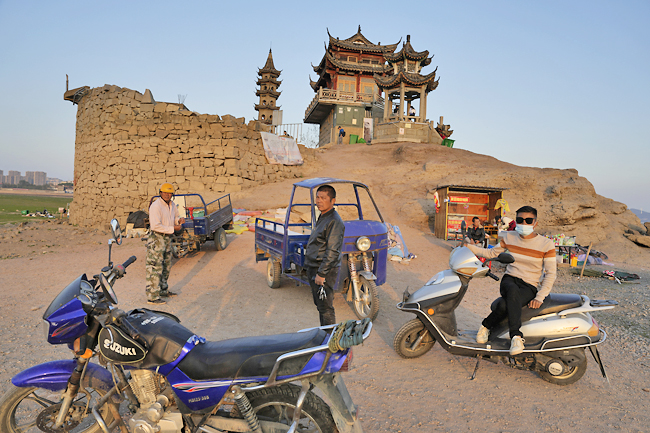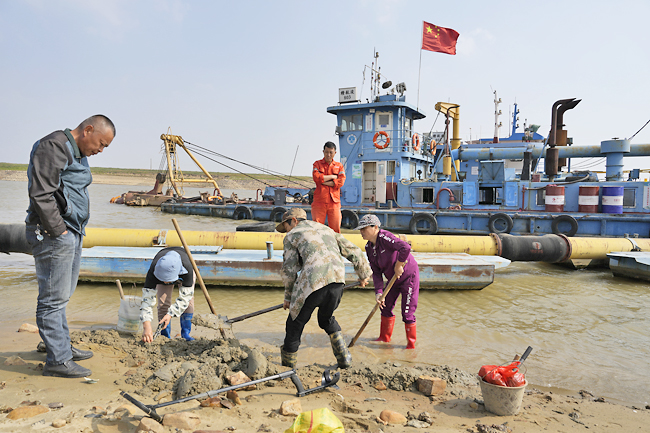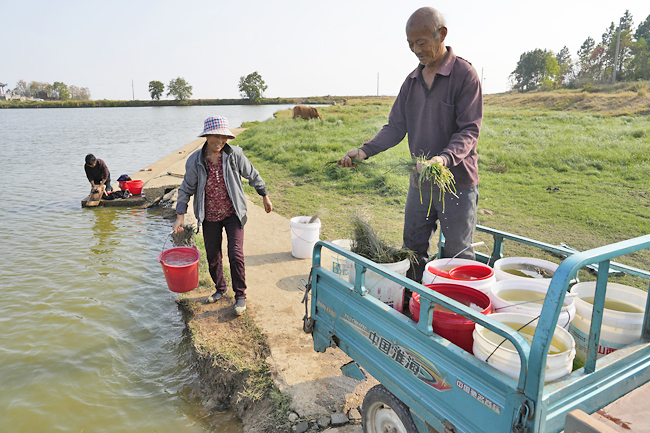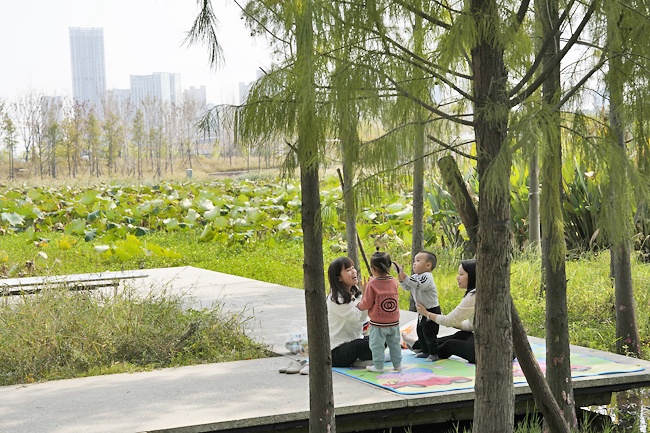BEIJING (AP) – To cushion the impact of extreme weather due to climate change, a Chinese landscape architect has been making the case for China and other countries to create so-called “sponge cities”.
Yu Kongjian, who spoke to The Associated Press in Beijing, uses sweeping language to express his vision for cities that can withstand variable temperatures, drought and heavy rainfall. The challenges for implementing this vision at a time of ambitious economic development in China are multifold.
Yu criticises much of Asia’s modern infrastructure for being built on ideas imported from Europe, which he said are ill-fitted to the monsoon climate over much of the Asian continent. He points to recent floods that have wreaked havoc in many Asian cities, which he said are caused by this architectural mismatch.
“There’s no resilience at all,” Yu said of the concrete and steel infrastructure of major cities, and of using pipes and channels to funnel away water. “Those are useless, they will fail and continue to fail.”
Instead, Yu proposes using natural resources, or “green infrastructure” to create water-resilient cities. It’s part of a global shift among landscape design and civil engineering professionals toward working more in concert with the natural environment.
By creating large spaces to hold water in city centres – such as parks and ponds – stormwater can be retained on site, helping prevent floods, he said. Sponge infrastructure also, in theory, offers ways for water to seep down and recharge groundwater for times of drought.






“The idea of a sponge city is to recover, give water more space,” Yu said.
A turning point in China’s awareness of climate change and urban adaptation came a decade ago, Yu said. A devastating flood hit the capital city of Beijing in July 2012.
Beijing’s biggest downpour in 61 years overwhelmed drainage systems, swamped downtown underpasses and sent flash floods roiling through the city’s outskirts. At least 77 people died.
Yu at the time sent a letter to Beijing’s party secretary, Guo Jinlong, calling for a change in how the government approaches city infrastructure. He continued to send letters to high-ranking officials and top leadership, including China’s leader Xi Jinping.
At a government working conference the next year, China incorporated the idea of sponge cities as a national strategy, “giving full play to the absorption, storage and slow release of rainwater by ecological systems”.
In 2014, the central government issued a directive: Recycle 70 per cent of rainwater runoff in 20 per cent of urban areas by 2020, and in 80 per cent of such areas by 2030.
The following year it launched 16 pilot sponge city projects, adding 14 more in 2016. Officials also said they would award CNY600 million (USD83 million) each year for three years to municipal cities, CNY500 million to provincial capitals, and CNY400 million to other cities.
The top-down mandate and subsidies spurred a boom in water-absorbing infrastructure, including in large cities including Beijing, Shanghai and Shenzhen.
Cities around the world are similarly trying to integrate “bioswales” along the sides of roads, protect remaining marsh areas to absorb water, and increase the capture of roof rainwater.
AN EXPERIMENT UNDERWAY
In China, one demonstration park is located in the northeast corner of the city of Nanchang, southern China. In mid October, engineers were putting finishing touches on a lush, picturesque 126-acre park designed to cushion the impact of both floods and droughts.
Formerly a coal ash dump site, the “Fish Tail” sponge park is built in a low-lying section of the city and intended to regulate water for surrounding neighbourhoods and business districts. The fly ash, a byproduct of coal combustion, was mixed with soil to create mini-islands in the lake that allow water to permeate. Fang said the mixture, held in place by plant roots, prevents the ash from flowing into the water.
During dry periods, the water could be withdrawn, purified and used for plant irrigation.
An engineer at Yu’s design institute Turenscape Fang Yuan said the park serves as “an ecological aquarium”, capable of retaining one million cubic metres of water during floods and means the water can be used, instead of just discharging it into the sewage system.
The park also serves as a habitat for plants and wildlife disrupted by extreme weather such as drought.
AN UNCERTAIN FUTURE
At times, the sponge city concept has been difficult to implement in China. Misallocation of funds, lack of expertise in sponge city planning, and other snags have doomed some projects.
In April, the Ministry of Housing and Urban-Rural Development announced some cities had “insufficient awareness, inaccurate understanding, and unsystematic implementation of sponge city construction”.
The notice also warned against using funds earmarked for sponge city construction for other general infrastructure projects, such as buildings and roads.
Those guidelines were issued after massive rainfall and catastrophic floods in the city of Zhengzhou killed 398 people last summer. Floodwater inundated a section of the city’s subway, trapping hundreds of commuters. Rescuers flocked to the scene, but 14 people died in the subway disaster.
Notably, Zhengzhou was one of the pilot sponge cities, with a planned investment of CNY53.58 billion. Some questioned whether sponge city projects work at all.
But an investigation by the State Council released in January, found that funds had been misspent. Only 32 per cent of the CNY19.6 billion that was invested went to what the government defined as sponge city concepts.
“Even at the critical moment when the whole country mobilised forces to support Zhengzhou’s rescue and disaster relief, they were still “building flower beds”, the State Council report said.







